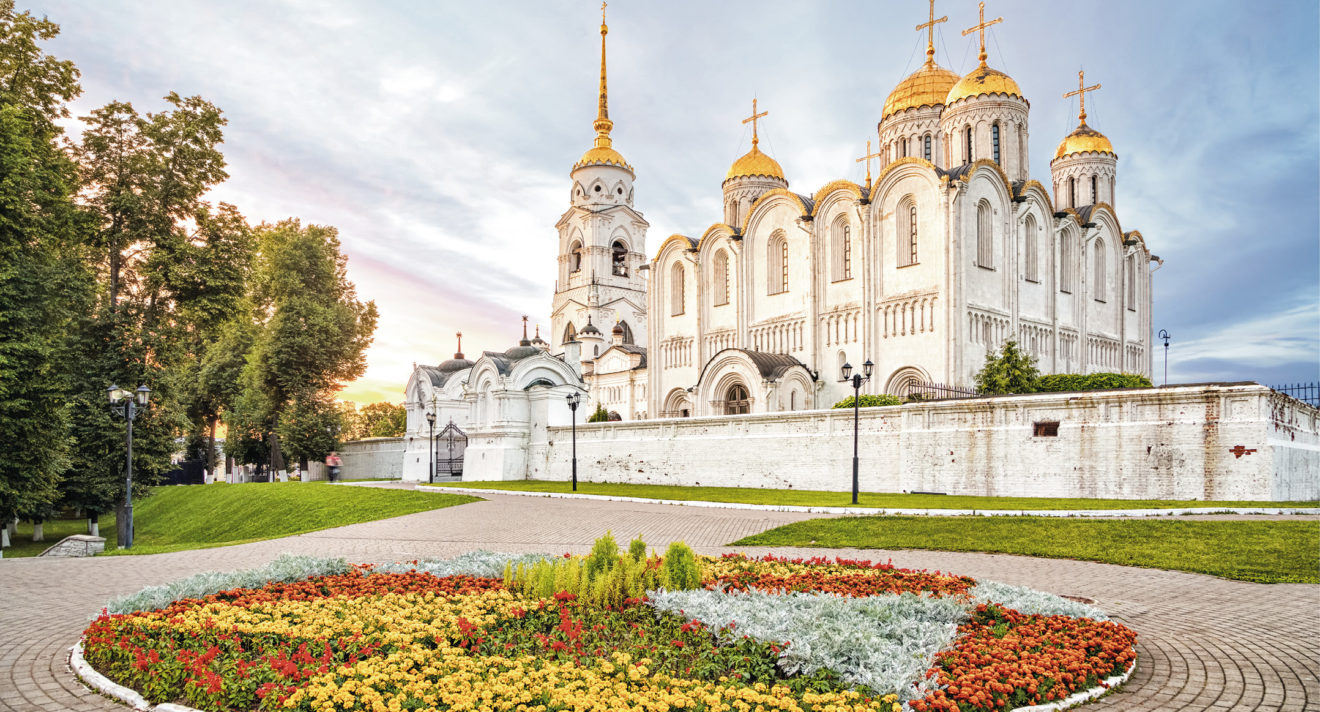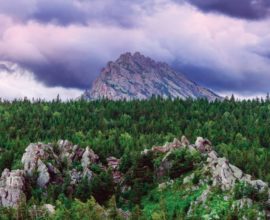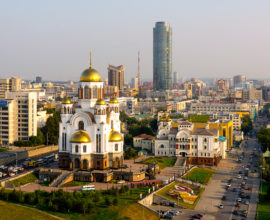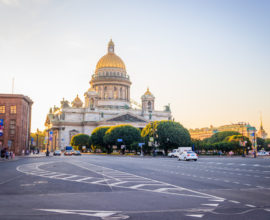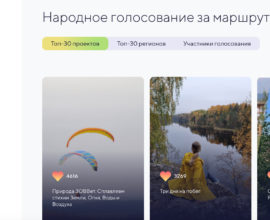Город Владимир и его история // Vladimir city and its history
Владимир: от центра до окраин // Vladimir: from the centre to the outskirts
22.03.2022
by Ekaterina Nemanova (Vladimir) // автор: Екатерина Неманова (Владимир)
* Текст дан с параллельным переводом: первый абзац – на английском языке, * второй – на русском языке.
The city of Vladimir, named after the Grand Prince of Kiev, Baptist of Russia, is an integral part of the Golden Ring of Russia tourist route. Vladimir and its surroundings are widely known for its temples – masterpieces of white-stone architecture of pre-Mongol Russia [Chronicles attribute the foundation of Vladimir to the end of the 10th century or 1108].
* Город Владимир, названный в честь великого князя Киевского, Крестителя Руси, является неотъемлемой частью туристического маршрута «Золотое Кольцо России». Владимир и его окрестности широко известны своими храмами – шедеврами бело-каменного зодчества домонгольской Руси [Летописи относят основание Владимира к концу Х в. или 1108].
In the very centre of the city there is The Golden Gate (1164) along with two cathedrals – The Dormition Cathedral (sometimes translated Assumption Cathedral) (1158-1160) and The Cathedral of Saint Demetrius (1194-1197). On the outskirts of Vladimir, in Bogolubovo settlement, there is another white-stone church – The Church of the Intercession on the Nerl River (1165). Noteworthy that the golden age of white-stone building fell on the government of Vladimir Monomakh’s grandsons – Andrey I Yuryevich Bogolubsky (near 1111-1174) and his brother Vsevolod III Yuryevich, or Vsevolod the Big Nest (1154-1212).
* В самом центре города расположены Золотые Ворота (1164), а также два храма – Успенский (1158-1160) и Дмитриевский соборы (1194-1197). В пригороде Владимира, в поселке Боголюбово, находится ещё один белокаменный храм – Церковь Покрова на Нерли (1165). Примечательно, что расцвет белокаменного строительства во Владимире пришёлся на время правления внуков Владимира Мономаха – Андрея Юрьевича Боголюбского (ок. 1111-1174) и его брата Всеволода Юрьевича Большое Гнездо (1154-1212).
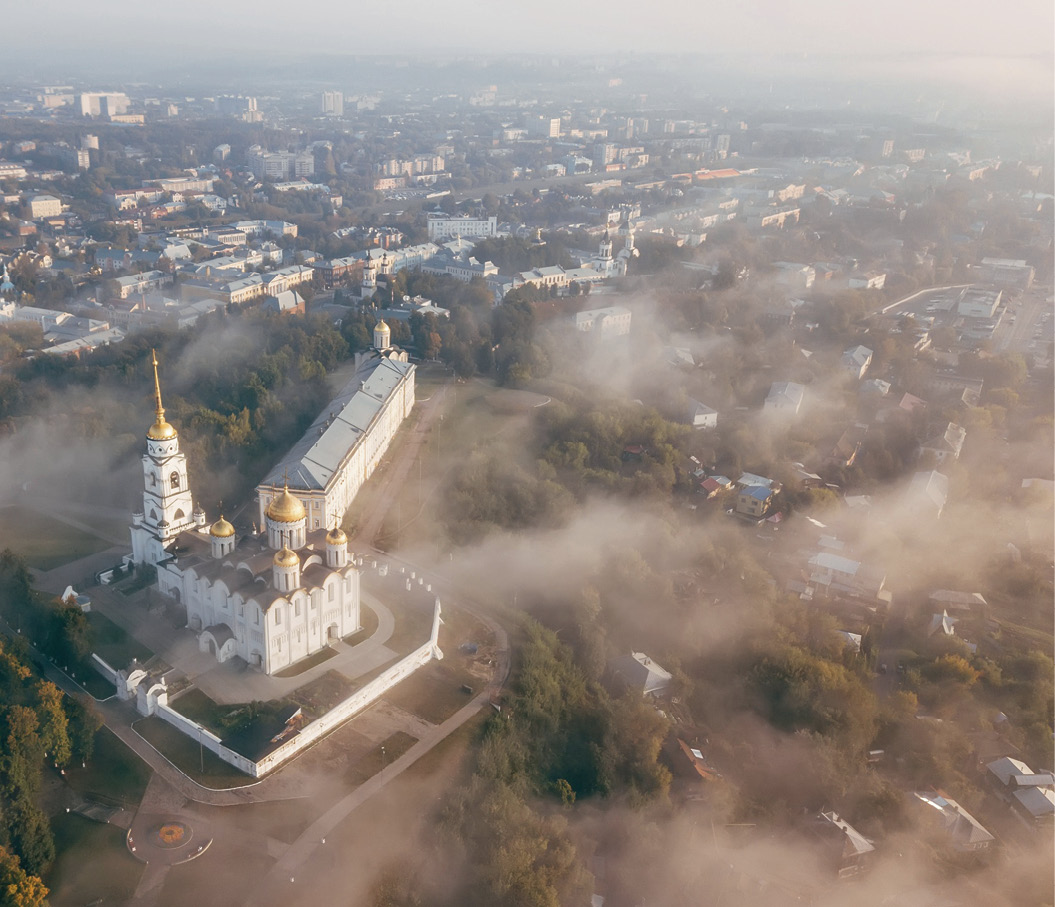
* В начале XII в. Владимир был богатым торговым городом. В 1158-1165 гг., при правлении Андрея Боголюбского, развернулось грандиозное строительство: новые мощные валы расположились вокруг крепости, строятся и невиданные до того времени белокаменные сооружения.
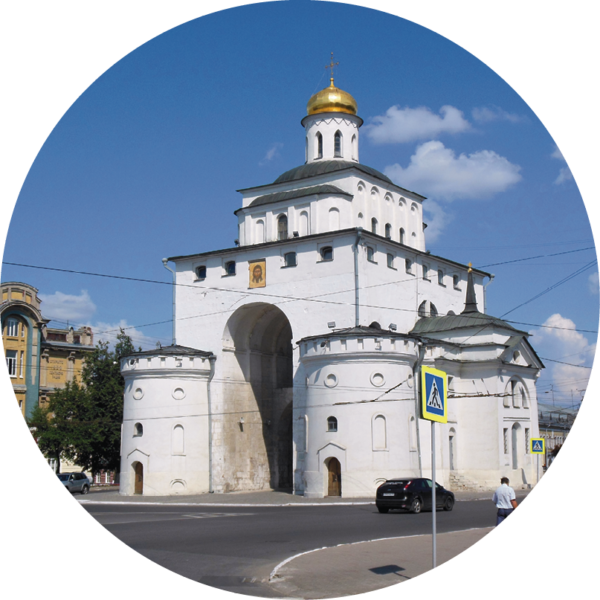
The fortress, erected under Andrey Bogolubsky, had five gates. Out of these, only the white-stone Golden Gate, the main passage tower of the fortress, has survived up to this day. Later extensions somewhat distorted the monumental appearance of the Golden Gate, and the cultural layer reduced their height by full 1.5 m. Nevertheless, this structure is rightfully considered one of the most remarkable monuments of ancient Russian fortification. The gate is included in the UNESCO World Heritage List.
* Золотые ворота (1158-1164)
Крепость, воздвигнутая при Андрее Боголюбском, имела пять ворот. До наших дней из них сохранились только белокаменные Золотые ворота – главная проездная башня крепости. Позднейшие пристройки несколько исказили монументальный облик Золотых ворот, а культурный слой сократил их высоту на целых 1,5 м. Тем не менее, это сооружение по праву считается одним из самых замечательных памятников древнерусской фортификации. Ворота внесены в Список мирового наследия ЮНЕСКО.

In 1157 Prince Andrey embarked upon fortifying a town. Thus, he was building the white stone Dormition Cathedral which was made of high-quality materials, being higher (32,3 m) and richer than Saint Sophia Cathedral in Kyiv. The church was painted in 1161. Later, in 1164 Andrey Bogolubsky relocated there the icon of Mother of God which had been secretly grabbed by him from Vyshgorod Monastery on leaving Kiev. The icon has been known as Virgin of Vladimir and has venerated as the greatest and most cherished Russian holy object since. The Dormition Cathedral was a mother church of Northern-East Rus and a model for building other Russian churches.
* Успенский собор (1158-1160)
В 1157 г. князь Андрей стал укреплять город. Поэтому, он строил Успенский собор выше (32,3 м) и богаче Собора Святой Софии в Киеве, поэтому был сооружён из высококачественного белого камня. В 1161 г. храм был расписан. Позже, в 1164 г. князь Андрей перенёс сюда икону Богоматери из Вышгородского монастыря, которую тайно забрал с собой, покидая Киев. С тех пор она стала называться Владимирской иконой Божьей Матери и почитается до сих пор как величайшая русская святыня. Собор был главным (кафедральным) собором Северо-Восточной Руси и явился образцом для строительства русских храмов.
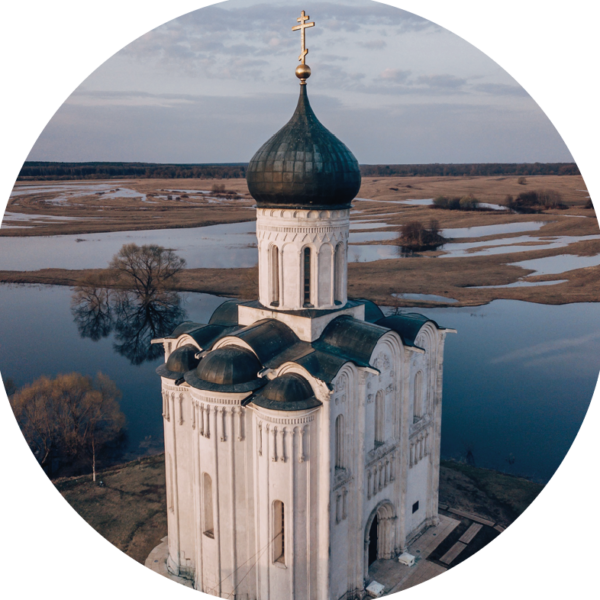
A wondrous temple, one of the most perfect in Russia, was built in one summer 1165 by Russian craftsmen «from all lands» in memory of the son of Prince Andrei Bogolyubsky Izyaslav, who died during a military campaign.
In 1325 primatial metropolia was relocated from Vladimir to Moscow. Nevertheless, right up to 1428 the Great Moscow enthronement was held in The Dormition Cathedral of Vladimir [Until 1432, Vladimir remained the main city of Russ, and the Moscow princes were called Vladimir’s].
* Церковь Покрова на Нерли (1165)
Дивный храм, один из самых совершенных на Руси, построен на одно лето 1165 г. Русскими мастерами «от всех земель» в память о сыне князя Андрея Боголюбского Изяславе, погибшего во время военного похода.
В 1325 г. Первосвятительская кафедра была перенесена из Владимира в Москву. Тем не менее, вплоть до 1428 г. возведение на Великий московский стол совершалось во владимирском Успенском соборе [Вплоть до 1432 г. Владимир оставался главным городом Руси, а московские князья именовались владимирскими].
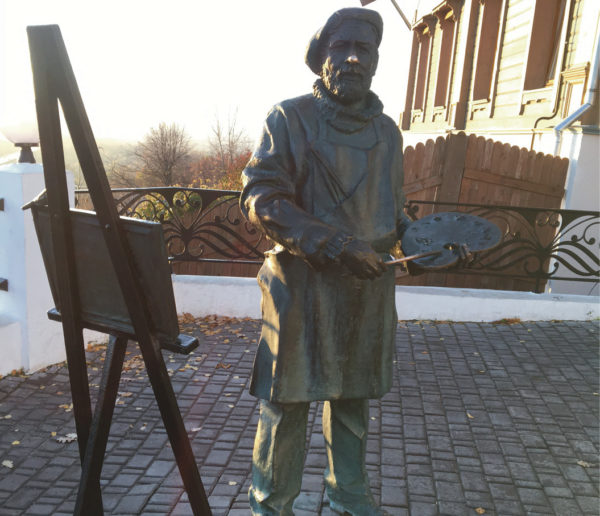
Check the full list of must-see places in Vladimir here // Полный список мест, которые обязательно нужно посетить во Владимире –> https://vk.cc/cbjAcR
Photo: Vladimir Nikonov -> instagram.com/nikonov_travel
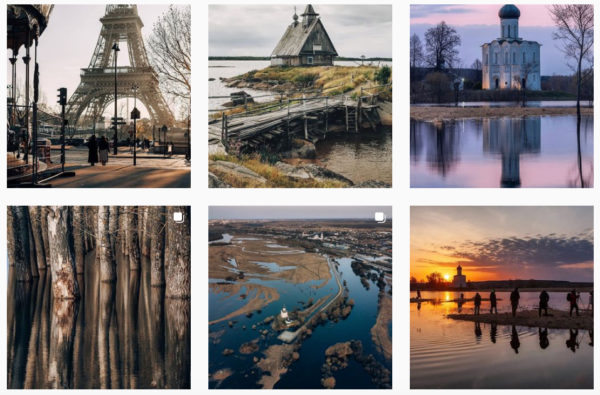
This article is published in EnglishMag 1Q/2022 issue: https://www.zinio.com/gb/englishmag-english-magazine/q1-2022-i534842

